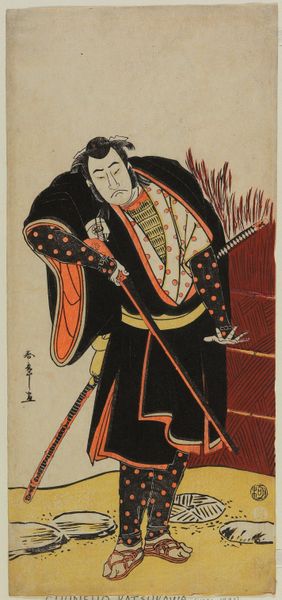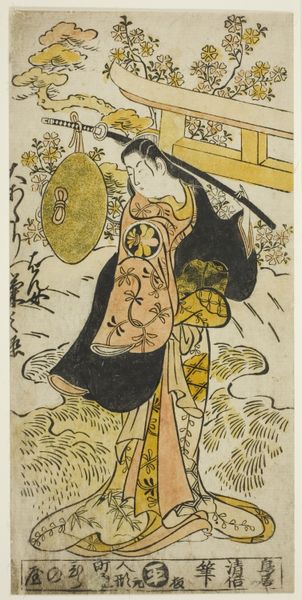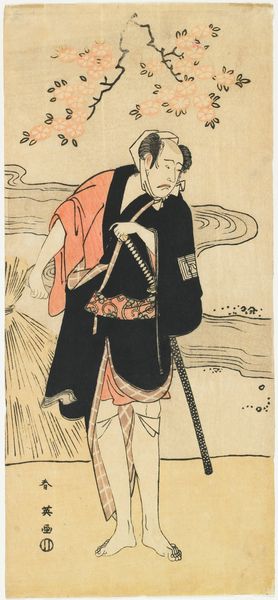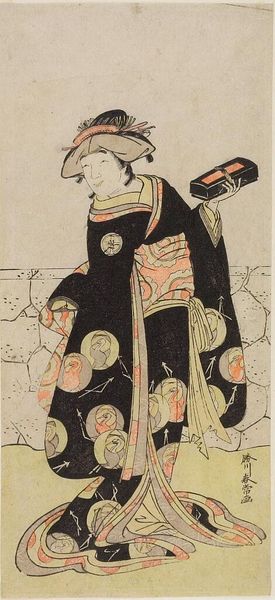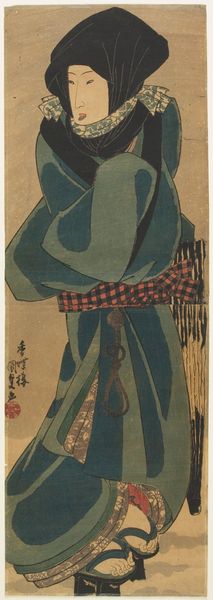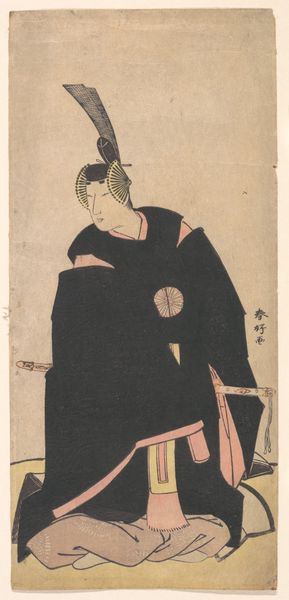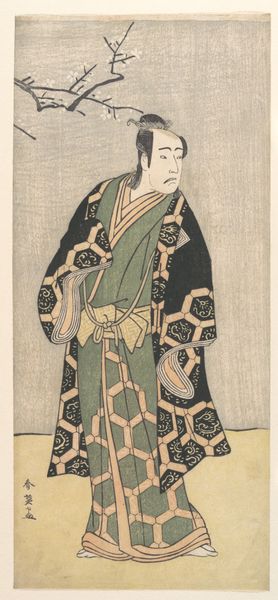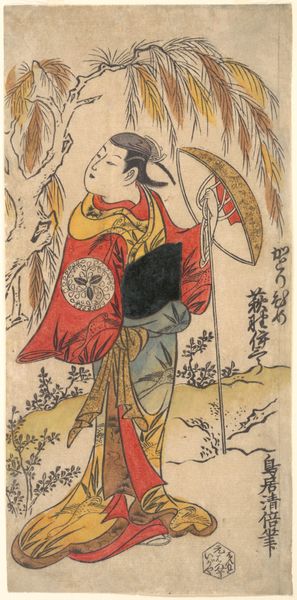
print, woodblock-print
#
portrait
#
narrative-art
#
ink painting
# print
#
asian-art
#
ukiyo-e
#
figuration
#
linocut print
#
woodblock-print
Copyright: Public domain
Editor: This woodblock print, "Kataoka Nizaemon VII as Ki no Natora," was created around 1794 by Tōshūsai Sharaku. The actor's intense expression is so striking. What do you make of the way Sharaku has portrayed him? Curator: The compressed lips, the furrowed brow—Sharaku is capturing more than just a likeness. Look at how the sword becomes an extension of that tension. The actor embodies the role, but Sharaku, through bold lines and exaggerated features, transmits something deeper about the character's inner state and cultural role. How does the crest influence your reading of the portrait? Editor: I hadn't focused on the crests before. Is that repeated symbol meant to emphasize his status, or is it related to the play itself? Curator: It is both, intertwining social identity and theatrical illusion. Family crests or *kamon* had deep cultural significance, functioning almost like a brand or identifier. Its presence here elevates the actor beyond his individual identity. But it is a theatrical representation. Can we separate the 'real' person from their cultural encoding? Editor: That's fascinating. So the actor's identity is wrapped up in layers of symbolism, from the *kamon* to the sword, expressing internal feelings, social status, and more. Curator: Exactly. And this is a vital key to reading Japanese woodblock prints of actors - this delicate, and culturally determined, layering of identities that is only partially apparent. Editor: Thank you. That helps me appreciate all that Sharaku conveys in this work. Curator: Yes, the art speaks clearly about that, once we learn to see.
Comments
No comments
Be the first to comment and join the conversation on the ultimate creative platform.
